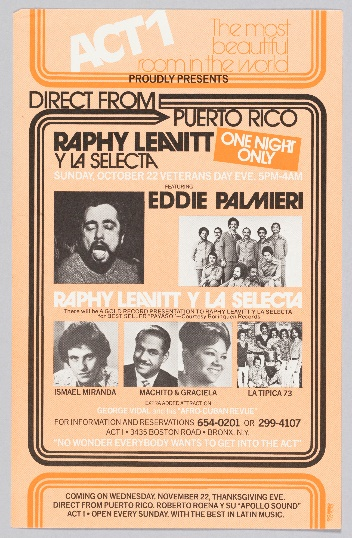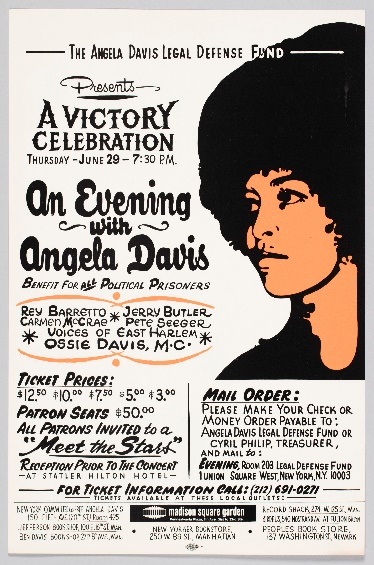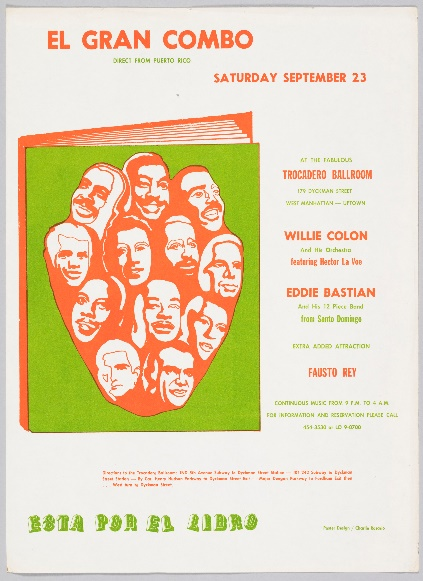OFFICE OF ACADEMIC APPOINTMENTS AND INTERNSHIPS
The Power of the Flyer
Flyers. Even in today’s increasingly digitalized society you still see them everywhere: clipped on light posts, spread out on the outside walls of buildings, handed out in corners, and so on. As we hold them in our hands or casually glance at them as we walk by, we seldom think of flyers as being keepers of history. But that is exactly what they can be, capturing and chronicling events that might have otherwise slipped through the cracks of historical archives.
/https://tf-cmsv2-smithsonianmag-media.s3.amazonaws.com/blogging/featured/2015.97.27.90.jpg)
Flyers. Even in today’s increasingly digitalized society you still see them everywhere: clipped on light posts, spread out on the outside walls of buildings, handed out in corners, and so on. As we hold them in our hands or casually glance at them as we walk by, we seldom think of flyers as being keepers of history. But that is exactly what they can be, capturing and chronicling events that might have otherwise slipped through the cracks of historical archives.
During my internship and fellowship at the National Museum of African American History and Culture I spent a lot of time exploring hidden treasures in the museum’s Archival Collection, documents, memorabilia, and photos that are patiently waiting to tell their tales. In them I found a number of sources of valuable information during my research for a Collection Story on Latin jazz. In particular, the old-fashioned advertising medium known as the flyer was peculiarly interesting and useful. Printed in very limited color, by today’s standards, these leaflets of fragile paper had managed to survive the decades. Donated by individuals who had the foresight to preserve them, bought from collectors, or donated by galleries, these flyers were frozen in time, forever advertising an event now long past.
The photos of three big music stars related to my research were in one of these flyers; Machito, Graciela and Eddie Palmieri (Figure 1). Machito was instrumental in introducing the Afro Cuban sound to the New York stage, which he cultivated with his orchestra from the 1940s to the 1980s. Graciela, his sister, imposed her style on the bolero giving it a jazz and “Filin” touch (a style of song derived from the word "feeling"). Palmieri is one of the main innovators in the mix of Latin jazz rhythms since the 1950s and still active. Their names are alongside those of other groups that also marked milestones in the development of tropical music although they did not necessarily play Latin jazz. The group, Raphy Levitt and La Selecta, had a career spanning 40 years and they are credited with hits such as “La cuna blanca” that contributed to the afro antillean sound. Ismael Miranda started singing in the 1960s and worked with important groups such as pianist Larry Harlow’s and Fania All Stars before creating his orchestra. He is still active in the tropical music scene. La Típica 73 was a very popular charanga and salsa orchestra that played for almost a decade and once featured Adalberto Santiago and José Alberto “El Canario”, musicians that later became important solo artists.

The name of another Latin Jazz giant, the Nuyorican Ray Barreto, appears in two flyers in NMAAHC’s collection (Figure 2-3). In the first one, Barreto joins an amalgam of Diaspora and African-American musicians in concert. The band was composed of Puerto Rican bassist Eddie Gomez and Colombian pianist Eddy Martinez married in sound to African-Americans, Tony Williams, on drums, and Sonny Fortune on piano, and their renowned American colleagues, jazz musicians Jack Wilkins on guitar, Lew Soloff on trumpet and Patti Wicks on vocals. The advertising circular includes descriptive phrases related to the musical talents of the two main musicians, Williams and Barreto. This “conguero” (conga player) was inspired by his Cuban colleague, percussionist Chano Pozo, one of the most important figures in the 1950’s development of Afro Cuban Jazz. Barreto played with Nuyorican legend Tito Puente and was director of Fania All Stars. He explored several music styles, charanga, boogaloo, salsa, jazz, Latin jazz, fusion with rhythm and blues among many others and served as sideman to multiple great stars. He was honored with the National Endowment for the Arts recognition as Jazz Master and was inducted into the International Latin Music Hall of Fame.
The other flyer describes a different activity in which Barreto contributed with his musical talent (Figure 3). He joined American folk singer and activist Pete Seeger and African-American singers Carmen McRae and Jerry Butler in an event in solidarity with activist Angela Davis. The celebration showcased several musical styles combined in favor of the cause of Human Rights for African Americans.

The fourth promotional document refers to a concert with three very important popular music ensembles of Puerto Rico, New York and the Dominican Republic (Figure 4). El Gran Combo, founded in 1962, is still one of the most important “salsa” bands in Puerto Rico and the world. Nuyorican Willie Colon, with 30 million records sold, has received numerous awards for his contributions to tropical music. Many of its most successful hits were sung by famous vocalist Hector La Voe, whose name is also featured on this flyer. Hector Juan Pérez Martínez’s (La Voe) biography was documented in the 2006 movie “El cantante” starring Latin stars Jennifer Lopez and Mark Anthony. Eddie Bastian and His Orchestra played Latin rhythms such as boogaloo, guaguancó and son. Fausto Rey is a skilled Dominican singer, guitarist and musical arranger who dominates a wide range of styles. The art created for this flyer was very characteristic of the period and establishes a direct relationship with a linguistic phrase in Spanish used at the time, inscribed at the bottom of the flyer: “Esta por el libro,” which means everything is as it should be.

All these activities were held in New York, which highlights the importance of this city during the migratory movement (from people looking for either permanent relocation or transitory opportunities) and as a cultural center in which music exerts social influence.
All flyers have the common feature of not having the year in which they were carried out due to the ephemeral and temporal nature of this type of advertising, meant to be quickly discarded. Nevertheless, all the documents in the archives have written on the back the year in which they were performed. The thorough investigative and corroborative work of curators and the staff of the Collection Management Department overcomes this omission. Innumerable thanks must be given to the original collectors who saw the potential value for research of these flyers and took the initiative to save them. Thanks to them, two of these flyers (Barreto and Machito) could be used as illustrations for narratives included in NMAAHC’s Collection Stories. The other two are reminders of the universal and perpetual richness of Latin music.
Papers that had only sentimental value reveal information that can now contribute to the construction and illustration of a larger history to be shared. Print ephemera such as flyers are something we should consider seriously when we contemplate how we want to keep a concrete memory alive in order to remember and share life experiences. Far too many times focus is only placed on “solid” three dimensional objects; a pair of shoes, an article of clothing that was worn, an instrument, etc. However, the importance of flyers, a medium meant to be useless and forgotten after a certain date, has to be stressed. In many cases, they are the only evidence that we have to document a historic meeting or performance.
Related resources:
To provide guidance and advice on objects of special significance to you or your family, District Treasures is a community initiative of the NMAAHC in which museum conservation specialists interact personally with the public. Sessions are held at the museum on specific dates. The activity is part of the Save Our African American Treasures program, which offers tips on document management and conservation. You can find more information about this program here.
You can find lots of information about these artists, Latin music and Latin jazz online. Here are a few examples:
Latin Music USA: http://www.pbs.org/wgbh/latinmusicusa/home/
An Introduction to Jazz Fusion: https://www.quora.com/q/theeducationalblog/An-Introduction-to-Jazz-Fusion
Ray Barreto Biography: https://www.encyclopedia.com/people/literature-and-arts/music-popular-and-jazz-biographies/ray-barretto
Ray Barreto as a NEA Jazz Master Award recipient: https://www.arts.gov/honors/jazz/ray-barretto
Five legends of Latin jazz: https://www.liveabout.com/legends-of-latin-jazz-2039583
An Introduction to Latin Music: https://www.libertyparkmusic.com/latin-music-salsa-history/
Also in print:
Spanish Harlem Musical Legacy -1930-1980. Silvio Alava
Afro Cuban Jazz – Scott Yanow
Latin Jazz – The perfect combination- Raul Fernández
